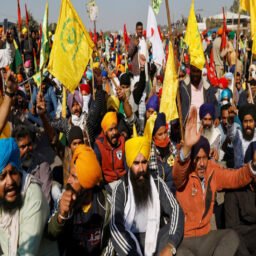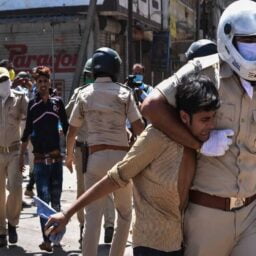INTRODUCTION
Workers around the world wait for the day when they receive their pay check. This pay check gives them immense satisfaction and brings joy in their lives however the same is not the case difference is more for women of colour and immigrant women with women who don’t receive the same pay as received by the men. There is a stark contrast in the pay gap between men and women.
“Globally, the gender pay gap stands at 16%, meaning women workers earn an average of 84 percent of what men earn.”[1]
This contrast of the pay gap may have adverse consequences for women and her family who despite of doing the same work get paid less than men. “This situation has been exaggerated by COVID-19 which could push globally 96 million people into extreme poverty by 2021 comprising 47 million women and girls themselves living on USD 1.90 per day.”[2]
Though the statistics show that men may be more likely to bear the physical/health-related consequences, women likely to be impacted from economic consequences. Some believe that gender pay holes should take a secondary lounge amidst pandemic, the said emergency is probably going to exacerbate disparities. “Ladies bring in around one-fifth less cash than men around the globe”, reflecting variables from parenthood and work in lower-wage occupations to generalizations in advancement choices, as indicated by the International Labour Organization (ILO).
THE GENDERED IMPACT OF COVID 19 ON PAY GAP
“Across the world, the gender gap is likely to increase this year as countries are likely to see their lower-wage jobs disappear,”
– Anita Bhatia
According to the ILO’s Global Wage Report 2020-2021, women and low-paid workers will have to bear the burden of the pandemic in terms of economic consequences. They will have to bore up the decrease in their wages due to a decrease in their working hours. There is a consensus that pandemic will have an impact on the global economy but especially countries that are undergoing lockdowns, this will increase the unemployment level and low-wage jobs. The COVID-19 is likely to widen the pay gap between males and females.
India is also experiencing the same situation especially the women. During the lockdown period, there has been a spike in the number of cases registered against domestic violence. Not only women were subjected to physical and mental pain, but they were also and are confronting the economic problems as well resulting from the job loss. According to an Oxfam report, women are given 34% less pay than same qualified men while globally the average pay of women is 16% less than men.
“As per the CMIE Consumer Pyramids Household Survey (CPHS) data, four out of 10 women lost jobs in India and 17 million women lost their jobs during the nationwide lockdown in March and April 2020. A World Bank report suggested that 49 million people will be pushed to abject poverty because of the pandemic; out of this, more than 12 million people will be pushed to poverty in India.[3]”
These statistics are testimony to the stark gender pay gap and gender inequality experienced in India when compared to the world.
A Brief Analysis of COVID-19 frontline women health-workers fight for fair pay
Our country heavily relies on a group known as “Accredited Social Health Activists (ASHA), established in 2005, a key focus of the program was reducing maternal and infants” [4]death so all recruits are women and had been active in their fight against polio and TB. Currently, this all-female group had been playing an important role in tracing the chain of coronavirus.
To our dismay, the Indian army of health workers has been underpaid and harassed. According to some pieces of evidence, they are given Rs. 2000 p.m. and no sort of protective gear is being provided by the government. As a result, some ladies of this group have succumbed to the virus. Such Pay-check is meagre itself and adding to the woes, they have not been paid for months.
“ASHAs in some parts of the country are earning as little as 3,000 rupees ($40) per month to fight the pandemic.”[5]
As per Time.com in their article ‘Indian Female Health Workers 2019’, reported the difficulties and problems of low wages faced by ASHA workers. Archana Gugare from Pavnar, Maharashtra mentioned that before pandemic she used to work for 2-3 hours and received 2000 rupees ($27 per month). This also allowed her to do other errands. But the situation has changed. During pandemic, she has been going home to home to track the chain and provide treatment to the COVID patient.
“Despite of working for 9-10 hours a day, she has been getting a 1,000-rupee ($13.50) COVID-19 stipend, but that doesn’t make up for the lost income.”[6]
THE LEGAL ASPECTS OF PAY DISPARITY IN INDIA
In 2015, seventeen sustainable development goals (SDG) were adopted in 2015. One of them being SDG 5 aimed at improving the conditions of life of women and removing the pay gap. The constitution of India grants equal pay for equal work and there are many provisions that point towards the implementation of equity in terms of pay. The following articles of in a way promote gender parity i.e., Article 14, Article 15(1), Article 15(3), Article 16, Article 39, Article 42, Article 51(A)(e).
The principle of equal pay for equal work was introduced in 1962 in Kishori Mohanlal Bakshi v. Union of India[7] however the court rejected the demand for equal pay. Subsequently, it was in Randhir Singh v. Union of India[8] in 1982 in which the court recognized the principle of equal pay for equal work not as a fundamental right but as a constitutional right. It was concluded in Punjab and Ors v. Jagjit Singh and Ors[9] that,
“the principle of ‘equal pay for equal work’, which meant equal pay for everyone irrespective of sex, was deducible from the Preamble and Articles 14, 16, and 39(d) of the Constitution. The principle of ‘equal pay for equal work’, was held to apply to cases of unequal scales of pay, based on no classification or irrational classification, though both sets of employees (engaged on a temporary and regular basis, respectively) performed identical duties and responsibilities.”
THE WAY FORWARD
This blog has also talked about the legal aspects of the pay disparity. The fact that it has been discussed is to show the fact that women can take legal help apart from other measures to face the unequal pay received by them at the workplace. The other measure is being vigilant. Women need to be aware of job values and how a job is compensated are important skills to learn. Knowing about salary benchmarks will allow women to negotiate effectively. The second is conversation. Women need to communicate to the department when it appears that there is no equal pay. Cultural Barriers have always stopped women from taking the paid and highly skilled work. The problem of the pay gap can only be resolved by the change in mindset and patriarchal values imbibed by society. Proper investment in girl child development should be done to increase their chance of success. Conducting a periodic check of salary. Setting up dashboards where women can complain regarding the difference in the pay gap. Checking for the biases in increment during the appraisal cycle. All these measures will help to narrow down the gender pay gap which has increased during the pandemic.
Author(s) Name: Nandini Yadav (Rajiv Gandhi National University of Law, Patiala)
References:
[1] The Editor of UN Women, ‘Explainer: Everything you need to know about pushing for equal pay’ (UN Women,14 September 2020) <https://www.unwomen.org/en/news/stories/2020/9/explainer-everything-you-need-to-know-about-equal-pay> accessed on 6 September 2021
[2] The Editor of India.com, ‘Coronavirus pandemic will push 47 million more women – girls into extreme poverty by 2021:UN’ (India.com, 3 September 2020) <https://www.india.com/news/world/coronavirus-pandemic-will-push-47-million-more-women-girls-into-extreme-poverty-by-2021-un-4129938/> accessed on 6 September 2021
[3] S. Gupta and S. Chatterjee,’COVID-19 and its gendered impact’ (Observer Research Foundation, 23 December 2021) <https://www.orfonline.org/expert-speak/covid19-gendered-impact/> accessed on 6 September 2021
[4] Abhishyant Kidangoor, ‘1 million Women Healthcare Workers Have Been Drafted to Fight COVID-19 in India—For as Little as $40 a Month’ (Time, 28 October 2020) <India’s Underpaid Women Healthcare Workers Fight COVID-19 | Time> accessed on 6 September 2021
[5] Ibid
[6] Ibid
[7] AIR 1962 SC 1139
[8] 1982 SCC (1) 618
[9] 2016 SCC OnLine SC 1200
















